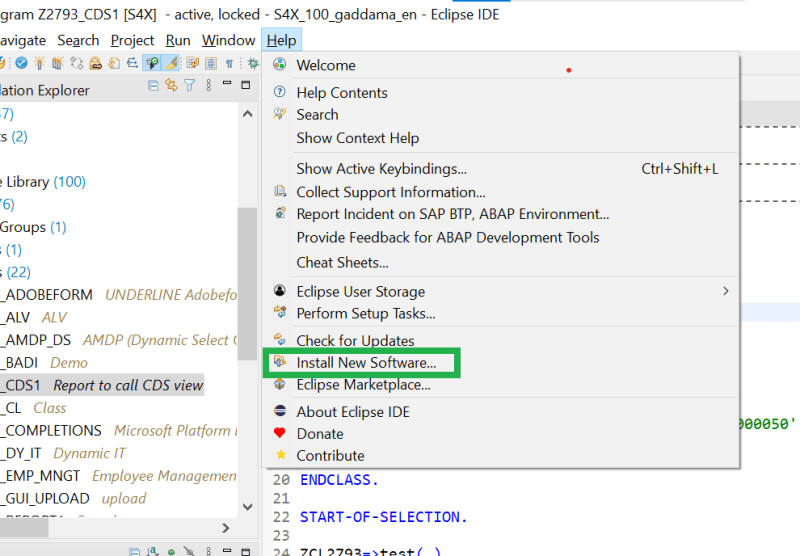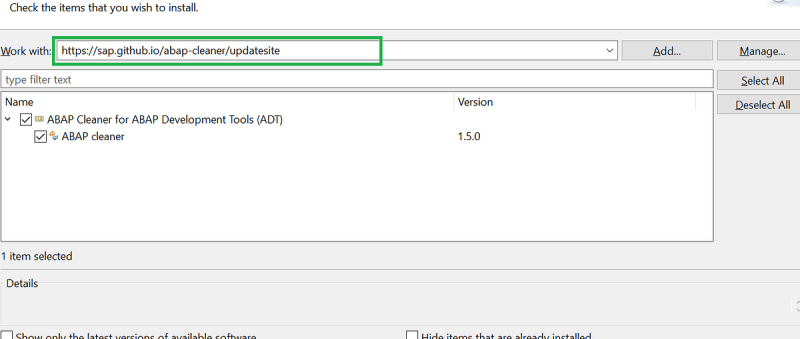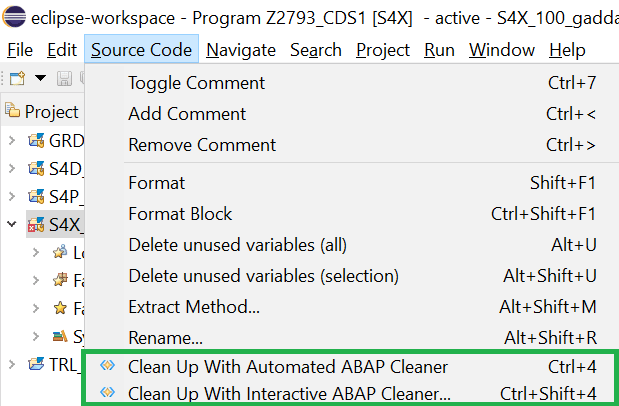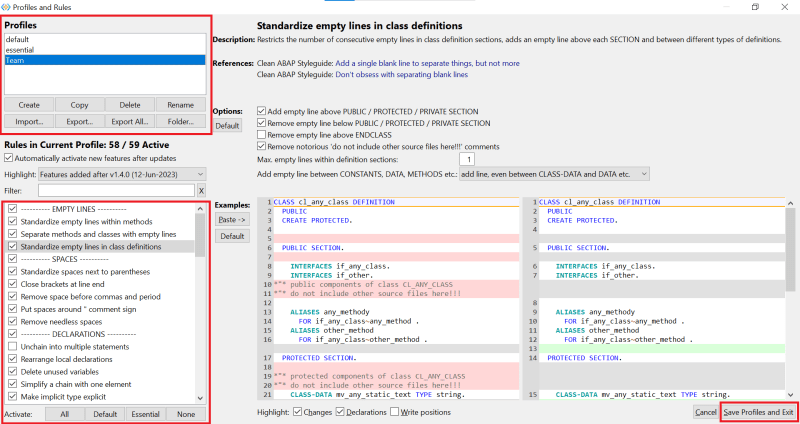This blog is to guide all Abapers on how to achieve clean code using ABAP Cleaner and not only to understand the advantages of clean ABAP and also how to use ABAP Cleaner.
ABAP Cleaner
The ABAP Cleaner tool is used to clean up ABAP code by applying various clean-up rules.
Here are some reasons why you might want to use the ABAP Cleaner tool:
- Automation: The ABAP Cleaner tool automates the process of cleaning up ABAP code, saving you time and effort.
- Uniformity: By using the ABAP Cleaner tool, you can ensure that your code follows a consistent style and structure. This improves code readability and makes it easier for other developers to understand and maintain the code.
- Error reduction: Following clean ABAP principles, which the ABAP Cleaner tool helps enforce, can reduce the number of errors and misunderstandings in your code. Clear and well-structured code is less prone to bugs and easier to debug.
- Modernization: The ABAP Cleaner tool encourages the use of modern language features and coding techniques. This is important if your organization plans to migrate to newer technologies like S/4HANA or the Cloud.
- Collective code ownership: Adopting clean ABAP practices fosters a culture of collective code ownership and feedback. It encourages collaboration and allows multiple developers to work on the same codebase more effectively.
- Maintainability: Clean ABAP code is easier to maintain and modify. It follows best code organization and readability practices, making it easier to add new features or make changes without introducing bugs.
What is ABAP Cleaner?
ABAP cleaner is a configurable tool that aims to automate whatever can be automated concerning ABAP code style.
What the ABAP Cleaner Tool Offers?
ABAP cleaner offers 59 cleanup rules with a total of 186 configuration options. Whereas, previously it offered 57 cleanup rules with a total of 162 configuration options.
Empty Lines
Standardize empty lines within methods
Separate methods and classes with empty lines
Standardize empty lines in class definitions
Spaces
Standardize spaces next to parentheses
Close brackets at line end
Remove space before commas and period
Put spaces around “ comment sign
Remove needless spaces
Declarations
Unchain into multiple statements
Rearrange local declarations
Delete unused variables
Simplify a chain with one element
Make implicit type explicit
Use FINAL for immutable variables
Standardize escaping of !parameters
Remove empty class definition SECTIONs
Add missing parameters to ABAP Doc
Remove lang=”en” from ABAP Doc
Syntax
Comment with “, not with * (for text)
Replace obsolete pseudo comments with pragmas
Move pragmas to correct position
Correct frequent typos
Resolve equals sign chain into several commands
Prefer calculation assignment operators (+=, -= etc.)
Prefer =, <>, <= etc. to EQ, NE, LE etc.
Prefer IS NOT to NOT IS
Move AND/OR etc. from line end to next line start
Remove empty commands
Shorten VALUE statements
Remove the self-reference me->
Omit RECEIVING
Omit optional EXPORTING
Commands
Convert CHECK outside loop to IF NOT … RETURN
Convert CHECK in loop to IF NOT … CONTINUE
Replace long IF blocks at loop end
Replace long IF blocks at method end
Replace CALL METHOD with functional call
Replace CREATE OBJECT with NEW constructor
Replace RAISE … TYPE with RAISE … NEW
Replace obsolete ADD … TO etc. with += etc.
Replace obsolete MOVE … TO with =
Replace TRANSLATE with string functions
Use assert_true and assert_false
Use assert_subrc instead of assert_equals
Use assert class instead of ASSERT
Pretty Printer
Convert upper and lower case
Indent lines
Alignment
Align ABAP Doc
Align METHODS declarations
Align METHODS … FOR TESTING
Align METHODS … REDEFINITION
Align ALIASES … FOR …
Align declarations
Align assignments to the same object
Align keywords with second word of first line
Align CLEAR:, FREE: and SORT
Align parameters and components
Align logical expressions
Align conditional expressions
Requirements and Installation
To install and use the ABAP cleaner plug-in for ABAP Development Tools (ADT) on Windows or macOS,
- 1. Install ABAP Development Tools as described in the Install ADT Tutorial (Step 1), using an Eclipse installation that is compatible with ADT.
- Start ADT, select the menu ‘Help / Install New Software…’, copy the link https://sap.github.io/abap-cleaner/updatesite to the ‘Work with’ field, and follow the installation steps, confirming to install ABAP cleaner. (Known issues)
After restarting ADT, open an ABAP code document in an editor, and use the menu ‘Source Code / Clean Up With Interactive ABAP Cleaner…’ (shortcuts Ctrl + 4 or Ctrl + Shift + 4),
If you select the first option “Clean Up with Automated ABAP Cleaner” it will automatically clean up the code based on the profile we have set up.
If you select the second option “Clean Up with Interactive ABAP Cleaner” here we can select the rules that we want to reflect in our code and here we have many options.
If we already created the profile, we can directly click on the “Save and Apply” button to apply the desired rules to be applied.
If we want to create a profile we need to click the configure button on the right corner.
On the top left in the profiles section we can Create, Copy, Delete, Import, and Export profiles.
On the bottom left in the rules section, we can check the checkbox that should clean up our code.
If the selection of rules is completed then click on the “save profiles and exit” button on the bottom right.
So, now we are set to give it a try.
In summary, the ABAP Cleaner tool is a valuable tool for automating the clean-up of ABAP code, ensuring uniformity, reducing errors, promoting modernization, fostering collective code ownership, and improving maintainability.
Have you used the ABAP Cleaner tool before? What was your experience like? Do you have any questions about Clean ABAP or the ABAP Cleaner tool?
Please feel free to share your thoughts in the comments section below.












Top comments (0)